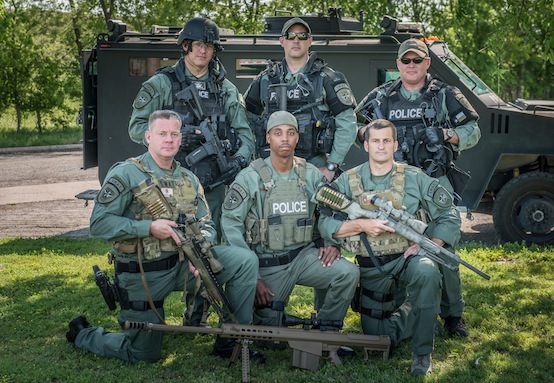Fidelis Ad Mortem?

Please read Ross Douthat on the Eric Garner tragedy and the need for reform of America’s policing:
[I]t’s worth returning, again, to a group of data points that bear on these issues. The first is the overall crime rate, which (as many, though not enough, people know) has been falling since the 1990s, with homicide rates basically back to pre-1960s crime wave levels. The second is the level of mortal danger faced by policemen in the line of duty, which has been declining steadily since its most recent, 1970s-era peak; according to one estimate, American cops are less likely to be killed in the line of duty than at any point since the 1870s. The third is the rate at which civilians are killed by police officers, which has been … well, there the data gets extremely cloudy, because we don’t have good official statistics on the subject. (Which is why “collect better statistics” reasonably tops a list of plausible reforms.) At the very least, though, we know that the overall number of homicides has dropped over the last decade, and the (again, problematic) statistics we do have show an increase in policemen killing civilians over the same period.
If you assume that a free society needs to strike a balance, needs to grant the police sufficient latitude to keep public order without granting them so much latitude that their powers are too easily abused, then these three numbers provide a decent heuristic for figuring out when the balance has tipped too far in one direction or the other. In a landscape where cops are getting killed in large numbers and the overall crime rate is high — basically the landscape of the 1970s — it’s reasonable to assume that your police force needs, maybe desperately, more arms and tools and protections and numbers if it’s going to adequately do its job. . . .
But given a landscape like ours, where the police are clearly quite well armed, police work seems to have become (by historical standards) very safe, crime rates are still falling, and the police seem to be dealing out death at an increasing rate … well, then you have a situation where generalizing to potential policy reforms from Eric Garner’s death, or other cases like it, makes a lot more immediate sense.
I don’t tend to like discussing policy in terms of anecdote. Eric Garner’s is a high-profile case that pushes a whole lot of buttons. I have my own opinions about the case based on what I’ve seen and read – this Daily News editorial sums them up well – but my opinions of this one case don’t matter that much, really, because I don’t know about the thousands of cases of alleged police excessive force that aren’t so high profile. Some of those look like Eric Garner’s. Many don’t.
That’s the reason for policy to be governed by the data. And the data strongly suggest that our society is out of balance in its prioritization of the safety of the police, and the protection of their prerogatives to maintain order, versus the safety of citizens who come into contact with police.
On that subject, here’s Frank Serpico:
I remember a guy I worked with back in the 81st Precinct, an ex-Marine named Murphy. He would not turn out for roll call until his shoes were spit-shined, and his uniform was creased.
One night, he was called to a family dispute. There was a man waiting behind the door, and he came out with a butcher knife and slashed Murphy’s face.
Murphy could have emptied his gun in him. Instead, he disarmed the man and put him in cuffs. What’s happening today in the performance of some officers can only be described as sheer cowardice. They don’t belong in the uniform, and they shouldn’t have weapons — whether they’re cops or not.
I hear cops saying all the time — and they’re proud of it — “shoot first, ask questions later.”
They say, “It’s my job to get home safe.” Yes, but not at the cost of a human being who never posed a threat to you in the first place.
Note that the last link is to an article about Akai Gurley, an innocent black man shot to death by a jumpy cop – who was also black. The hashtag #BlackLivesMatter highlights the racial aspects of these questions, and I don’t mean to belittle that aspect by saying that another way of slicing the question is to say that #SuspectsLivesMatter – which is what columns like this one appear to miss. They matter because they may be innocent, and they matter because even if they are guilty, they are human beings.
Yes, we have reason to worry about how excessive deference to the police facilitates outright abuse – but we have reason to act even if we assume absolute good faith on the part of the cops (as the Staten Island grand jury plainly did). We have reason even if you could prove that changing the way police approach suspects results in an uptick in the number of police injured or killed on the job, even if you could prove that there would be an uptick in crime generally.
There’s no guarantee that you could prove that – “stop and frisk” has declined dramatically in New York, and street crime continues to fall – but even if you could prove it, that wouldn’t end the discussion. Because there is also value to the protection of the suspect’s well-being, and we can’t just ignore that value. It has to be weighed in the balance. And the data suggests that, right now, we are very out of balance.
Comments